Baby Rattlesnakes: 5 Amazing Facts & 5 Pictures
The baby rattlesnake is very dangerous! They do not have the notorious rattle and they are very aggressive. This combination doesn’t end well for most that cross their paths.
They start small but grow into quite large snakes that can prove to be quite treacherous. Did you know baby rattlesnakes’ rattles are made of keratin, just like human nails? How about that you can tell how old they are by the number of rattles they have?
Come along to learn more about these facts and more!
#1: A Baby Rattlesnake is Called a Snakelet!
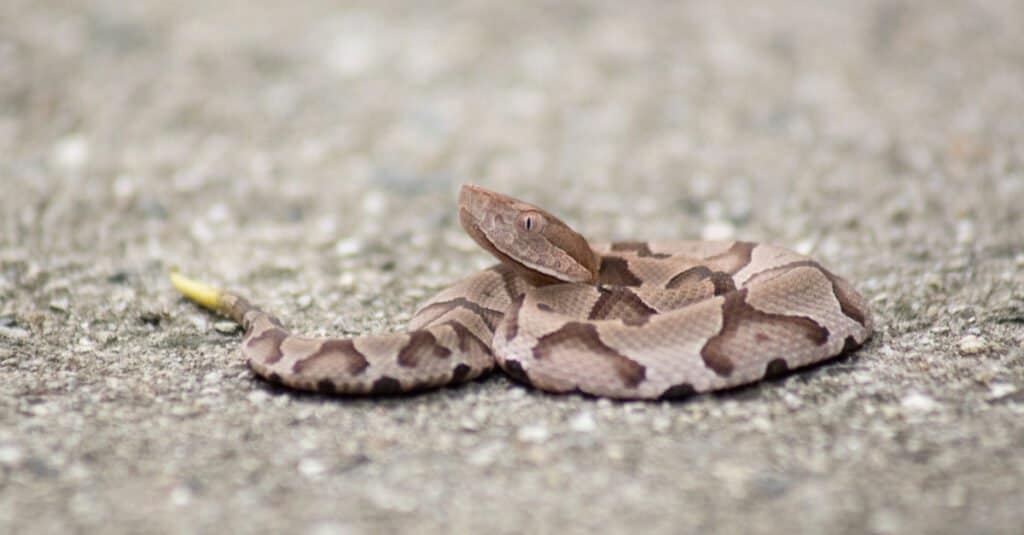
woodphotography LLC/Shutterstock.com
Baby rattlesnakes are called a snakelets!
Unlike many baby animals, the baby rattlesnake doesn’t have a specific name for its young. However, all baby snakes are called snakelets. A group of adult rattlesnakes is called a rhumba and a group of babies is called a pit or a nest of snakelets.
#2: Rattlesnake Snakelets Can’t “Rattle”
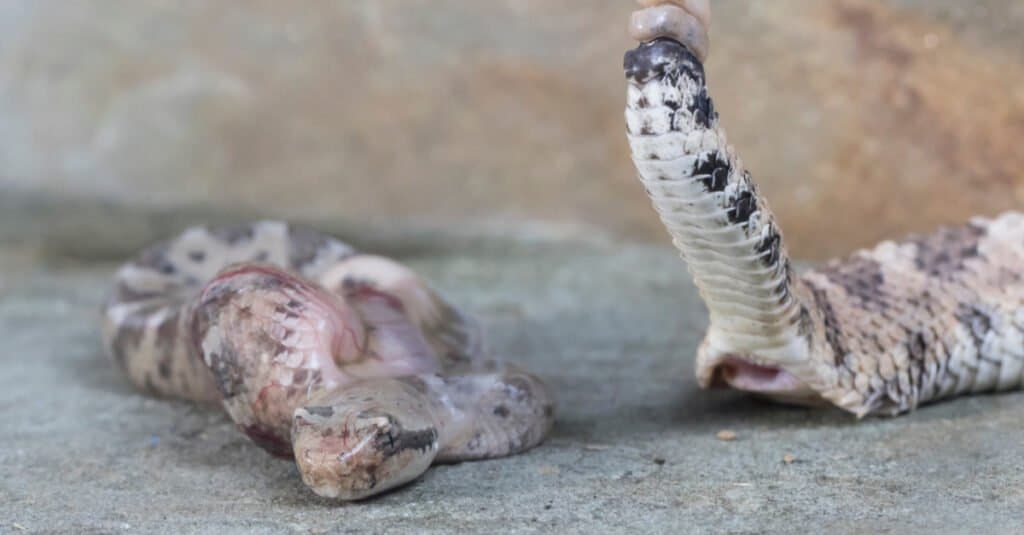
Mark_Kostich/Shutterstock.com
Baby rattlesnakes are born with a small, rounded tip on the end of their tail called a pre button. This pre button is the first sign of the tiny snake’s rattle, but it only lasts for a few days. Once the baby rattler sheds for the first time, the pre button sheds as well to reveal the first segment of the snakelets’ rattle.
However, before a young rattlesnake can use his rattle to make noise, he must grow at least one more rattle segment. This is because their rattles are made of keratin. When rattlers vibrate their tail section, the segments knock together, creating the ominous buzzing sound of a rattlesnake’s tail. Rattlesnake babies can begin rattling upon their second shed, which reveals their second tail segment.
As a snakelet grows, it continues to add segments to its rattle with each shed. However, it’s rare to see a rattlesnake with more than eight to nine segments since these segments are not permanent. In fact, with each new rattle at the tip of the tail, the furthermost (and oldest) rattles are constantly being pushed away. Some rattlesnakes with damaged or lost rattle matrixes will never grow a rattle at all!
#3: Rattlesnakes Babies Get a Bad Rap
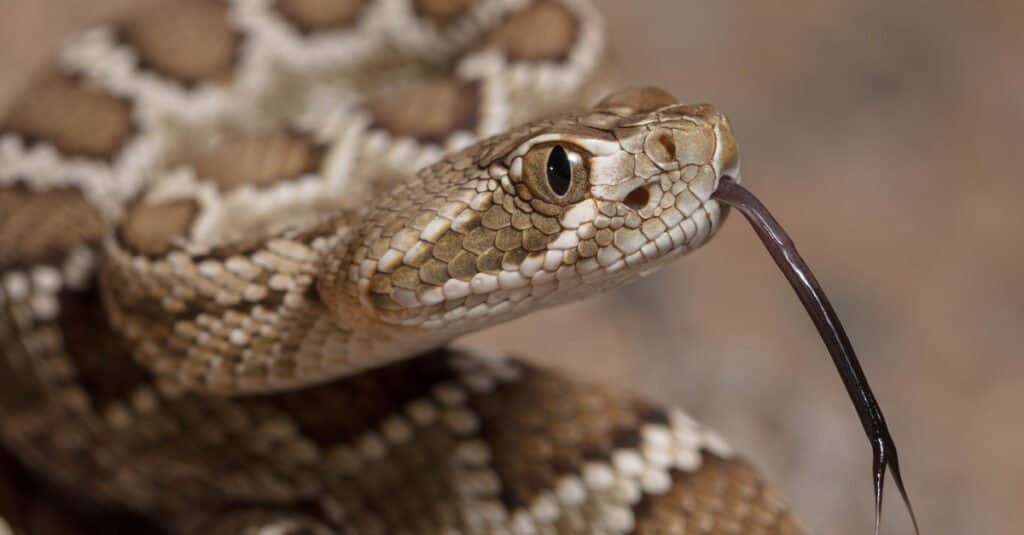
Alexander Wong/Shutterstock.com
“Timid” and “laid back” are probably not the first two words that come to mind when you think of baby rattlesnakes. However, the tiny rattlers prefer to shy away from humans and rarely attack when unprovoked.
Another common misconception about baby rattlesnakes is that they are more dangerous than their adult counterparts. Some believe that young rattlesnakes produce more venom and that they don’t warn before they bite. The truth is that baby rattlesnake bites contain less venom than adults. Their size and inability to rattle make them harder to spot, but even adult rattlesnakes don’t always warn before they bite.
#4: One Third of Rattlesnake Species Live in Arizona!
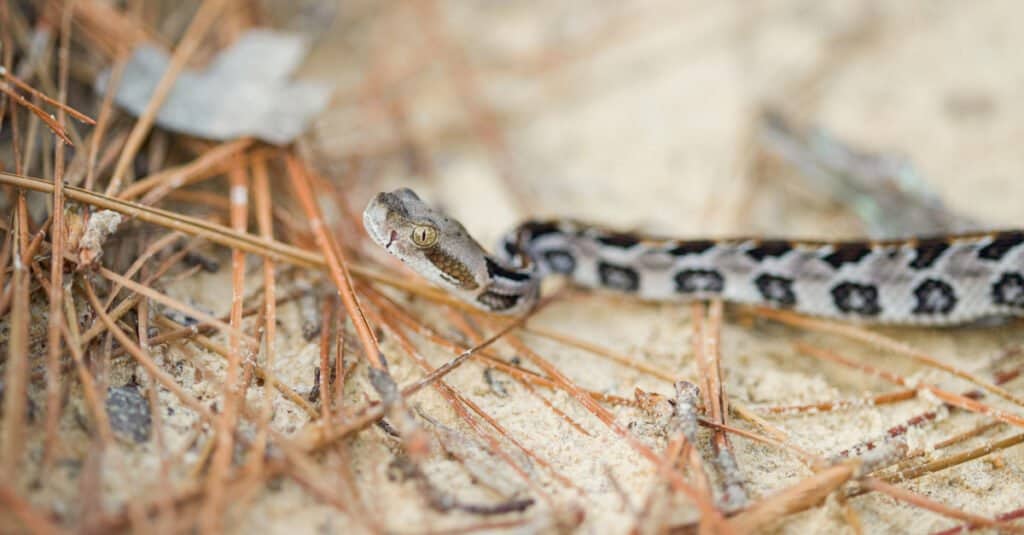
joseph_ricketts/Shutterstock.com
There are over 40 species of rattlesnakes and about one-third of them live in the state of Arizona. Arizona is home to more rattlesnakes than any other state in the U.S, with 13 species of rattlesnake calling The Grand Canyon State their home.
Arizona takes its snake population seriously. There are four species that get special protection from the Arizona Game and Fish Department:
- Ridge-Nosed Rattlesnake
- Massasauga Rattlesnake
- Rock Rattlesnake
- Twin-Spotted Rattlesnake.
Arizona is even home to the well-known Western Diamondback Rattlesnake, which is the largest species in the West of the United States. These giant snakes can grow to be over eight feet long and have live births of up to 20 babies!
#5: Baby Rattlesnakes Only Eat Once a Week
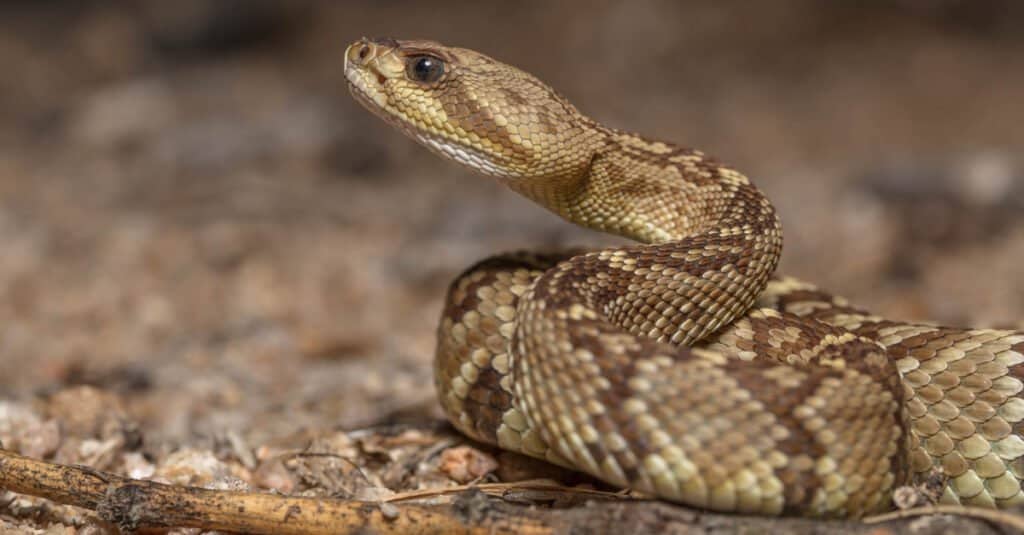
Alexander Wong/Shutterstock.com
Rattlesnake snakelets don’t depend on their mothers to feed them as newborns. For the first week of their lives, they begin to learn how to hunt and eat small insects and other small animals. After that, they enjoy a diet of small frogs, fish, and even the eggs of other animals!
Rattlesnakes don’t need much food to survive and often only eat about once a week. They can even survive anywhere from three to six months without a meal at all!
Discover the “Monster” Snake 5X Bigger than an Anaconda
Every day A-Z Animals sends out some of the most incredible facts in the world from our free newsletter. Want to discover the 10 most beautiful snakes in the world, a “snake island” where you’re never more than 3 feet from danger, or a “monster” snake 5X larger than an anaconda? Then sign up right now and you’ll start receiving our daily newsletter absolutely free.
FAQs (Frequently Asked Questions)
What are baby rattlesnakes called?
Baby rattlesnakes are called snakelets. A group of baby rattlesnakes is called a pit or nest of snakes.
How much do baby rattlesnakes weigh?
At birth, baby rattlesnakes are about 6 inches to a foot long and weigh around a third of a pound.
What do baby rattlesnakes eat?
Rattlesnakes are predators who feast on live prey. A newborn baby rattlesnake spends its first week of life eating small insects. Then, they enjoy a diet of small rodents, lizards, frogs, and other tiny animals. As adults, these snakes like to munch on squirrels, rabbits, rodents, sometimes even birds!
Where do baby rattlesnakes live?
Where a baby rattlesnake lives just depends on what the climate is like in their area. Those in cooler areas will have to hibernate for the coldest season and they tend to share the same dens, generation after generation. Those in warmer climates will nest in dens and other areas like crevices in rocks and holes in the ground. They can swim but prefer to pick places that help them stay dry and safe while they’re vulnerable.
More from A-Z Animals
The baby rattlesnake is very dangerous! They do not have the notorious rattle and they are very aggressive. This combination doesn’t end well for most that cross their paths.
They start small but grow into quite large snakes that can prove to be quite treacherous. Did you know baby rattlesnakes’ rattles are made of keratin, just like human nails? How about that you can tell how old they are by the number of rattles they have?
Come along to learn more about these facts and more!
#1: A Baby Rattlesnake is Called a Snakelet!

woodphotography LLC/Shutterstock.com
Baby rattlesnakes are called a snakelets!
Unlike many baby animals, the baby rattlesnake doesn’t have a specific name for its young. However, all baby snakes are called snakelets. A group of adult rattlesnakes is called a rhumba and a group of babies is called a pit or a nest of snakelets.
#2: Rattlesnake Snakelets Can’t “Rattle”

Mark_Kostich/Shutterstock.com
Baby rattlesnakes are born with a small, rounded tip on the end of their tail called a pre button. This pre button is the first sign of the tiny snake’s rattle, but it only lasts for a few days. Once the baby rattler sheds for the first time, the pre button sheds as well to reveal the first segment of the snakelets’ rattle.
However, before a young rattlesnake can use his rattle to make noise, he must grow at least one more rattle segment. This is because their rattles are made of keratin. When rattlers vibrate their tail section, the segments knock together, creating the ominous buzzing sound of a rattlesnake’s tail. Rattlesnake babies can begin rattling upon their second shed, which reveals their second tail segment.
As a snakelet grows, it continues to add segments to its rattle with each shed. However, it’s rare to see a rattlesnake with more than eight to nine segments since these segments are not permanent. In fact, with each new rattle at the tip of the tail, the furthermost (and oldest) rattles are constantly being pushed away. Some rattlesnakes with damaged or lost rattle matrixes will never grow a rattle at all!
#3: Rattlesnakes Babies Get a Bad Rap

Alexander Wong/Shutterstock.com
“Timid” and “laid back” are probably not the first two words that come to mind when you think of baby rattlesnakes. However, the tiny rattlers prefer to shy away from humans and rarely attack when unprovoked.
Another common misconception about baby rattlesnakes is that they are more dangerous than their adult counterparts. Some believe that young rattlesnakes produce more venom and that they don’t warn before they bite. The truth is that baby rattlesnake bites contain less venom than adults. Their size and inability to rattle make them harder to spot, but even adult rattlesnakes don’t always warn before they bite.
#4: One Third of Rattlesnake Species Live in Arizona!

joseph_ricketts/Shutterstock.com
There are over 40 species of rattlesnakes and about one-third of them live in the state of Arizona. Arizona is home to more rattlesnakes than any other state in the U.S, with 13 species of rattlesnake calling The Grand Canyon State their home.
Arizona takes its snake population seriously. There are four species that get special protection from the Arizona Game and Fish Department:
- Ridge-Nosed Rattlesnake
- Massasauga Rattlesnake
- Rock Rattlesnake
- Twin-Spotted Rattlesnake.
Arizona is even home to the well-known Western Diamondback Rattlesnake, which is the largest species in the West of the United States. These giant snakes can grow to be over eight feet long and have live births of up to 20 babies!
#5: Baby Rattlesnakes Only Eat Once a Week

Alexander Wong/Shutterstock.com
Rattlesnake snakelets don’t depend on their mothers to feed them as newborns. For the first week of their lives, they begin to learn how to hunt and eat small insects and other small animals. After that, they enjoy a diet of small frogs, fish, and even the eggs of other animals!
Rattlesnakes don’t need much food to survive and often only eat about once a week. They can even survive anywhere from three to six months without a meal at all!
Discover the “Monster” Snake 5X Bigger than an Anaconda
Every day A-Z Animals sends out some of the most incredible facts in the world from our free newsletter. Want to discover the 10 most beautiful snakes in the world, a “snake island” where you’re never more than 3 feet from danger, or a “monster” snake 5X larger than an anaconda? Then sign up right now and you’ll start receiving our daily newsletter absolutely free.







